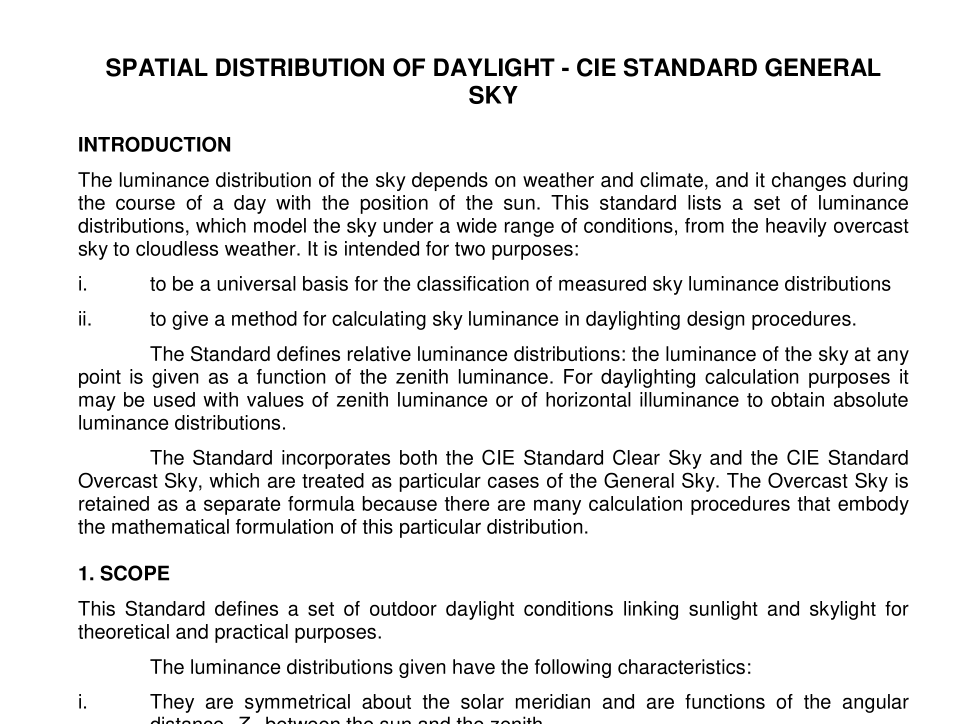BS ISO 15469 pdf download

BS ISO 15469 pdf download Spatial distribution of daylight — CIE standard general sky
1. SCOPE
This Standard defines a set of outdoor daylight conditions linking sunlight and skylight for theoretical and practical purposes.
The luminance distributions given have the following characteristics:
i. They are symmetrical about the solar meridian and are functions of the angular distance, Z s , between the sun and the zenith.
ii. They are defined by smooth continuous functions. Such distributions are typical of cloudless skies and of those where the cloud cover is homogeneous. They provide an approximation to skies of broken cloud that is sufficiently accurate for many practical daylight calculation purposes.
iii. The relative luminance at any point in the sky depends on the angle, ?, between that sky element and the sun, and on the angle, Z, between the sky element and the zenith. It is given in terms of two functions: the relative scattering indicatrix, f, and the luminance gradation between horizon and zenith, ?(Z).
2. NORMATIVE REFERENCES
The following standards contain provisions, which through reference in the text, constitute provisions of this standard. At the time of publication, the editions indicated were valid. All standards are subject to revision, and parties to agreements based on the Standard are encouraged to investigate the possibility of applying the most recent editions of the standards indicated below. Members of the CIE, IEC and ISO maintain registers of currently valid international standards.
1 . CIE 1 7.4-1 987 International Lighting Vocabulary, ILV (joint publication IEC/CIE).
2. ISO 31 :1 992 Quantities and Units, Part 6: Light and Related Electromagnetic Radiations.
3. LIST OF SYMBOLS
For the purposes of this Standard, the following symbols apply:
a, b luminance gradation parameters
azimuth of a sky element (clockwise from north) [rad]
s azimuth of the sun (clockwise from north) [rad]
c, d, e scattering indicatrix parameters
shortest angular distance between a sky element and the sun [rad]
f scattering indicatrix function
(Z) luminance gradation function
angle of elevation of a sky element above the horizon [rad]
s angle of elevation of the sun above the horizon [rad]
L a luminance of a sky element [cd/m 2 ]
L z zenith luminance [cd/m 2 ]
Z angular distance between a sky element and the zenith [rad]
Z s angular distance between the sun and zenith [rad]
For quantities and units see Normative References 1 & 2.
4. SPECIFICATION: THE RELATIVE SKY LUMINANCE DISTRIBUTION The position of an arbitrary sky element is defined by its zenith angle, Z, and by the azimuth difference between the element and the sun,s . If Z s is the zenith angle of the sun, the angular distance between the element and the sun is









